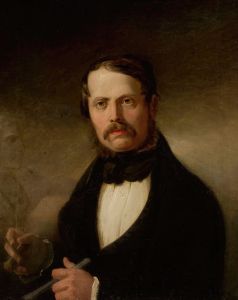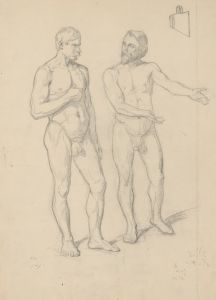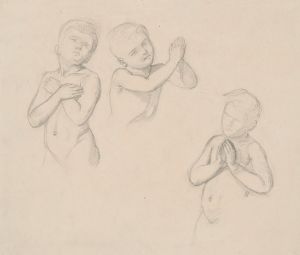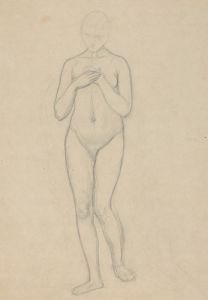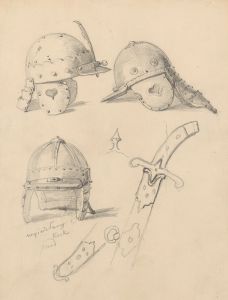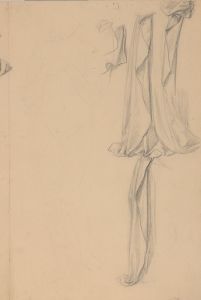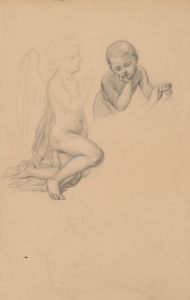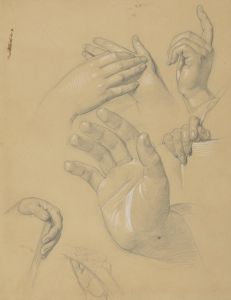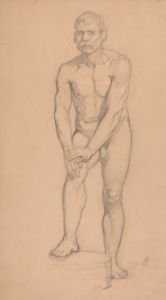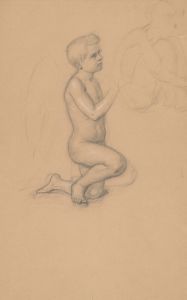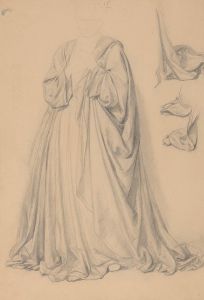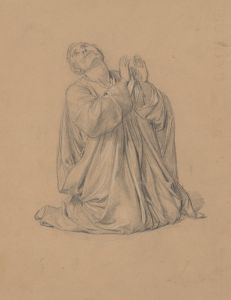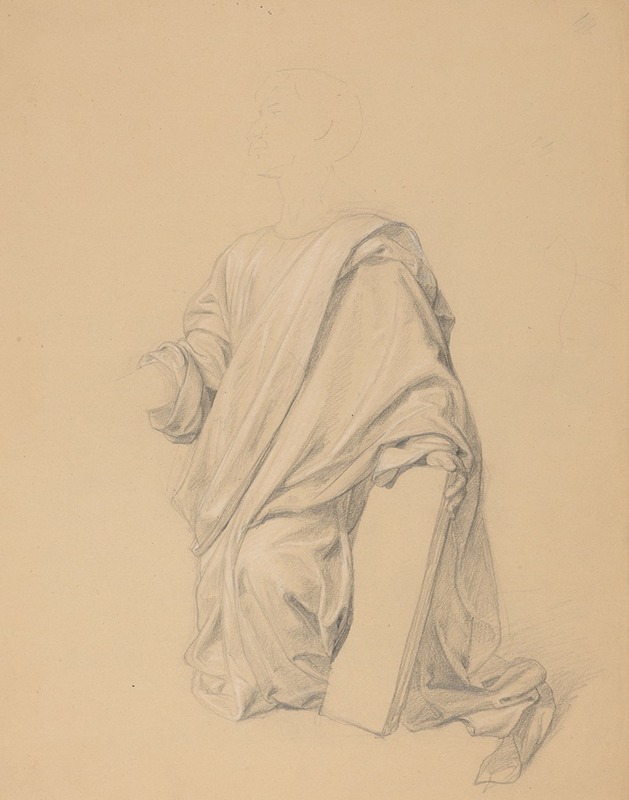
Study of Moses’ robes for the painting ‘The Immaculate Conception of the Blessed Virgin Mary’
A hand-painted replica of Józef Simmler’s masterpiece Study of Moses’ robes for the painting ‘The Immaculate Conception of the Blessed Virgin Mary’, meticulously crafted by professional artists to capture the true essence of the original. Each piece is created with museum-quality canvas and rare mineral pigments, carefully painted by experienced artists with delicate brushstrokes and rich, layered colors to perfectly recreate the texture of the original artwork. Unlike machine-printed reproductions, this hand-painted version brings the painting to life, infused with the artist’s emotions and skill in every stroke. Whether for personal collection or home decoration, it instantly elevates the artistic atmosphere of any space.
Józef Simmler, a prominent Polish painter of the 19th century, is known for his historical and religious paintings. One of his notable works is "The Immaculate Conception of the Blessed Virgin Mary," which reflects his mastery in depicting religious themes with a deep sense of devotion and artistic skill. Although there is limited information specifically about the "Study of Moses’ robes" for this painting, we can explore the context and significance of Simmler's work and his approach to religious art.
Józef Simmler was born on March 14, 1823, in Warsaw, Poland, and he became one of the leading figures in Polish art during his time. He studied art in various European cities, including Dresden, Munich, and Paris, which influenced his style and technique. Simmler was particularly known for his attention to detail and his ability to convey emotion and narrative through his paintings.
"The Immaculate Conception of the Blessed Virgin Mary" is a theme that has been explored by many artists throughout history, often depicting the Virgin Mary in a state of grace, free from original sin from the moment of her conception. This subject is rooted in Catholic doctrine and has inspired countless works of art. Simmler's interpretation would likely have been influenced by the religious and cultural context of 19th-century Poland, a time when the country was under partitions and experiencing a national revival.
In creating religious paintings, artists like Simmler often conducted detailed studies of various elements, including clothing and drapery, to achieve a realistic and respectful representation. The "Study of Moses’ robes" for this painting would have been an essential part of Simmler's preparatory work, allowing him to experiment with the textures, folds, and colors of the garments. Such studies help artists understand how light interacts with fabric and how to convey movement and form, which are crucial for creating lifelike and dynamic compositions.
Simmler's works are characterized by their meticulous attention to historical accuracy and their ability to evoke a sense of reverence and spirituality. His paintings often feature rich colors, intricate details, and a harmonious composition, all of which contribute to the overall impact of the artwork. While specific details about the "Study of Moses’ robes" are scarce, it can be inferred that Simmler approached this study with the same dedication and precision that he applied to his other works.
Józef Simmler's contributions to Polish art extend beyond his paintings; he played a significant role in the cultural life of his country. He was a member of the Society for the Encouragement of Fine Arts in Warsaw and was involved in various artistic initiatives. His legacy is preserved in the collections of Polish museums, where his works continue to be admired for their artistic and historical significance.
In summary, while detailed information about the "Study of Moses’ robes" for "The Immaculate Conception of the Blessed Virgin Mary" is not readily available, Józef Simmler's overall approach to religious art and his dedication to capturing the essence of his subjects are well-documented. His work remains an important part of Poland's artistic heritage, reflecting the cultural and spiritual values of his time.





